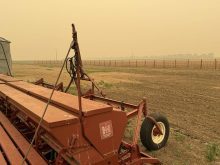Farmers learned a lot from the real-world whiplashing experiment you could call “Farming in 2021-22.”
“Make sure your dugouts are deep enough,” said Ridgeville, Man., farmer Neil Claringbould, when asked what he learned from the brutal drought of 2021, as he showed other farmers and researchers one of his new water retention dams on a stream on his land.
How about 2022?
“We weren’t short of grass.”
Last year at this time, neighbouring farmer Wayne Chubaty was trying to limp his cattle through on crunchy pastures, dry dugouts and trucked-in water. This year, after frequent rainfall, things couldn’t be more different.
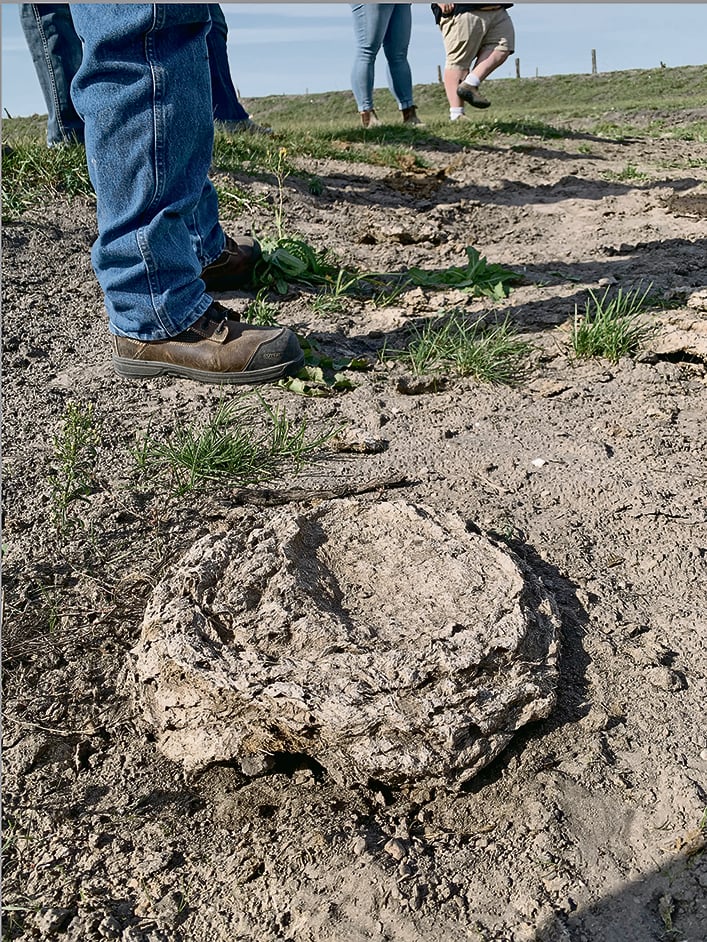
“It’s been a good year. We’ve got good crops,” said Chubaty, pleased with the lush growth on his pastures and ample water sources.
“It’s a big turnaround.”
Both producers are luckier than most. They were already constructing water retention structures on their land when the drought set in. Chubaty had water retention ponds holding back water that normally flowed out during wet times, while Claringbould was installing dugout/dams that were slowing and storing water that would normally flow out of his land quickly and into often-flooded local drainage systems.
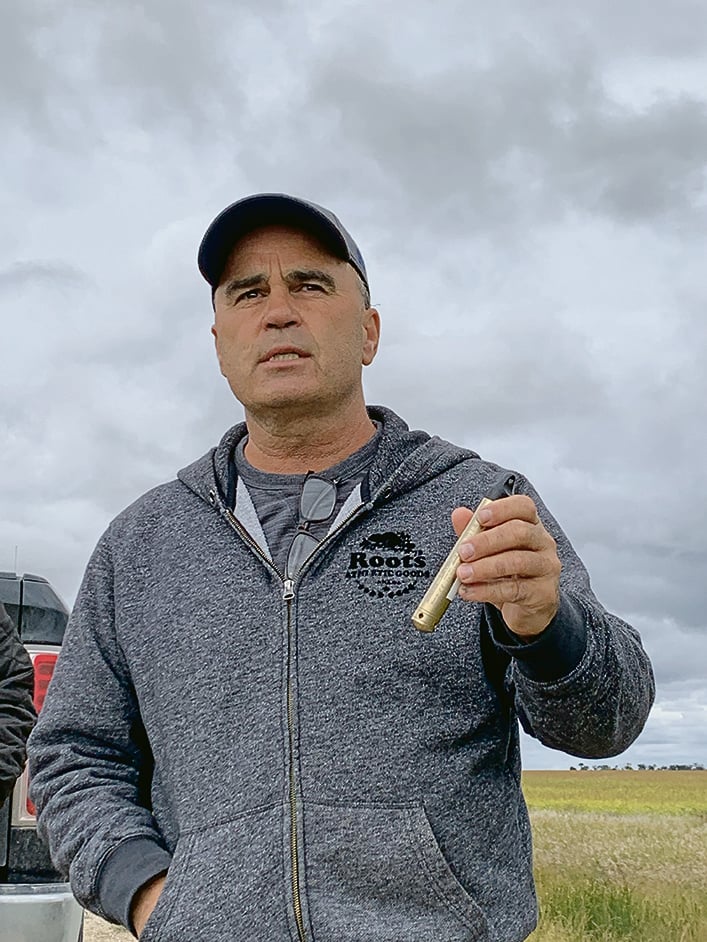
The work is a collaboration between farmers, local watershed authorities and Agriculture Canada’s Living Labs program. It’s an attempt to connect producers, researchers and water management people to develop solutions for practical production challenges that can have multiple beneficiaries.
The simple water retention facilities on Chubaty’s and Claringbould’s farms provide their cattle with water, keep nutrients and sediments out of drains, streams, rivers and lakes, and reduce flooding when major melt and rain events occur. They also protect local roads from washouts.
“It helps the whole community: the producer, the municipalities (working to) reduce some of the nutrients coming downstream,” said Joey Pankiw, who oversees environmental goods and services programs for the Seine Rat Roseau Watershed District.
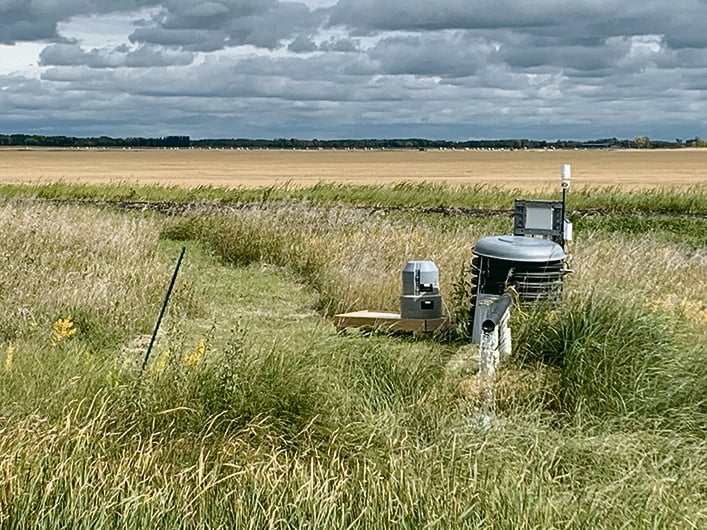
Another nearby farmer able to do some real-world research on his production in extreme times is Les Felsch, a grain farmer who has been installing tile drainage on his often-flooded land. He farms beside “the Main Drain,” which empties much of the farmland east of the Red River near Emerson, Man.
His 45-acre field that abuts the Main Drain has provided a perfect laboratory for examining what effect tile drainage has in terms of controlling water flow out of heavy clay farmland and how it affects the nutrients that flow out of the field. The drainage channel comes alongside one end of the field through a raised road via a culvert and departs from the other end of the field through another.
“It is an ideal site for monitoring,” said Steve Sager, an Agriculture Canada soil specialist involved with Living Labs.
“It’ll give us a better understanding of the contribution of the tile and surface water on heavy clay soils.”
Felsch is looking forward to seeing the data from this year, when heavy rains gave the tile drainage a good workout. That data will come over the winter as multiple readings per day are analyzed and compared to precipitation and other measures. Last year gave scientists little data to look at.
“It’s almost a write-off for data,” said Sager about 2021. “We don’t get to choose the years.”
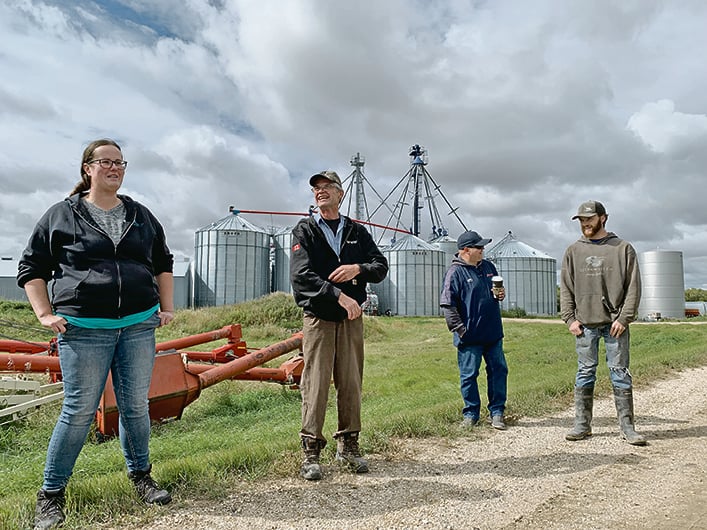
However, seeing how systems operate in extreme conditions allows researchers to see how ideas that might sound good in theory hold up to volatile prairie farming conditions.
That’s something Dorothea Gregoire of the Seine Rat Roseau Watershed District said is key to the importance of the Living Labs program, which allows field-size experiments like these to occur.
“A few years ago, these kind of projects were far beyond our scope, but they have huge potential benefits for the watersheds,” said Gregoire, who focuses on regenerative agriculture.
Having real farmers to work with is another benefit because most research has generally not involved producers so directly.
“They come in with their own knowledge, their own information, which informs us,” said John Fitzmaurice, the Agriculture Canada site manager for Living Labs projects in Manitoba.
Claringbould said he finds that his cattle grow better when they drink dugout water from a tank rather than from wading into the dugout itself, so he fences his constructed drainage storage dugouts, holds back water and has enough for his animals when it gets dry for a while. He wanted his newest dugout to hold water and provide dry access across the drainage stream, so it had multiple purposes.
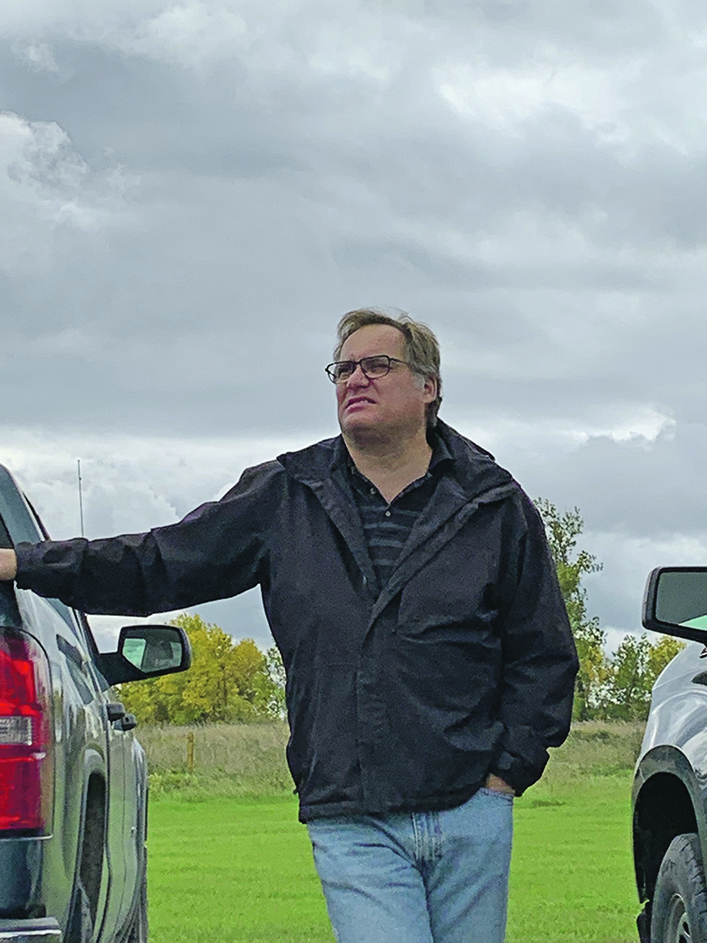
For Pankiw, this simple water retention, created by building an earthen crossing over the channel and running a controllable culvert through it, has provided him with another pleasant benefit.
“It’s surprising how many types of waterfowl are in there,” said Pankiw. “Ducks and geese. It was a real home for waterfowl.”
Ten local farmers have been involved with the water retention projects.
Demonstrating the biodiversity value of farmland is a research focus for Melanie Dubois of Agriculture Canada in Brandon. She has been collecting bees and other insects in the Living Labs projects and is analyzing the sorts of insects that reside in farm-altered landscapes.
“Research is useless unless it results in helping someone do something better,” said Dubois.
“Old PFRA people, we’re pretty practical. We want to see practical change, and if it doesn’t result in that, then as far as I’m concerned, we failed, missed the mark.”
On another field of Claringbould’s, Agriculture Canada researcher May Elsinger has been caging small patches of hayland and measuring plant growth. She measures the ratio of grasses to legumes, analyzes the forage for protein, digestibility and mineral content, and calculates how much carbon is sequestered in the soil by the plants.
The last two years have provided her with some real-world polarities.
“It’s been interesting having last year’s drought… juxtaposed with this high rainfall year, so that we can get a sense of what a high level of productivity would be and a very low level of productivity,” said Elsinger.
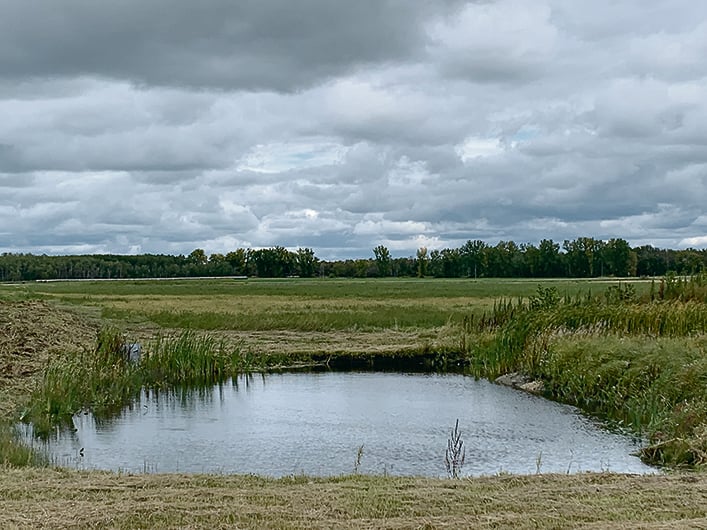
“We can judge the carrying capacity of our pastures.”
This year the growth has been lush, with this field producing about three 1,300-pound bales per acre for the first cut. Last year, it only produced one bale. One of the only similarities between last year and this year is the legion of crickets singing and clattering around on the ground, the product of eggs laid through last year’s drought. When farming systems get hit by extreme weather, all sorts of impacts can be felt for years afterward.
“It’s very helpful to us to understand what’s happening above the ground and how we can adjust our work to reflect the realities of the producers,” said Fitzmaurice.
“We’re finding that Living Labs has been very helpful for us also in directing our research.”
For Claringbould, all this knowledge helps him look after his cow herd and manage his farm. Following a severe drought with rainstorms of up to five inches, he knows next year could throw anything his way.
“Either bone dry or soaking wet, or both,” he said when asked what his weather prediction for next year is.
Being able to look after his herd and pastures no matter which extremes get thrown his way is what motivates the work he’s doing, and what has helped Living Labs find willing farmers to help it with research that goes far outside the usual laboratories of science.









